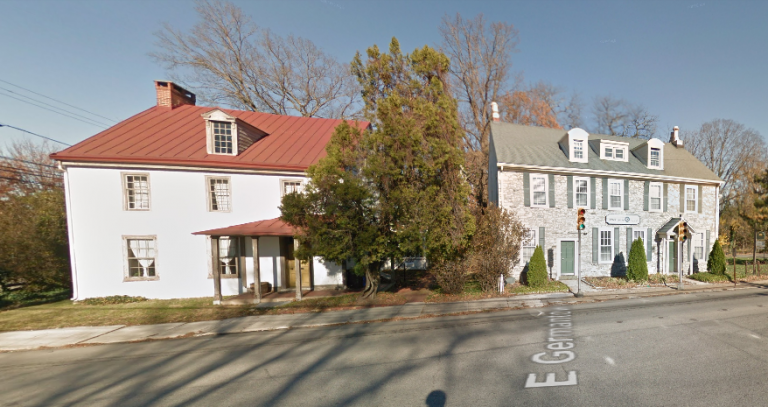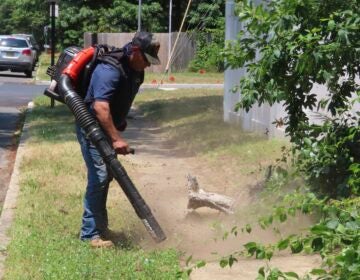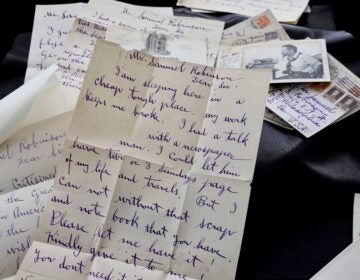Former Underground Railroad stop in Montco at center of preservation fight
The property is part of the Plymouth Meeting Historic District, established almost 50 years ago, and the buildings are on the National Register of Historic Places.

Abolition Hall in Plymouth Meeting, Pennsylvania. (Google Maps)
A years-long fight over an historic property in Whitemarsh Township, near Plymouth Meeting in Montgomery County, Pa., continues this week as a developer and a group of preservationists make their cases in a township zoning hearing.
At issue is a property that was once a stop along the Underground Railroad, sheltering African-American slaves who had escaped Southern plantations and were traveling toward freedom.
At the intersection of Germantown and Butler pikes sits a 10-acre parcel of land with three buildings: a farmhouse, a carriage house, and a barn built in the late-18th and early 19th centuries.
Around 1856, owner George Corson expanded his carriage house into Abolition Hall where those opposed to slavery could discuss civil disobedience against the 1850 Fugitive Slave Act that allowed local governments to capture and return runaway slaves. Runaway slaves also found safe haven within Abolition Hall.
Later, the building would become the studio of Thomas Hovenden, a major American painter of the late 19th century, who married into the Corson family and is best known for painting heroic scenes of the Civil War.
The property is still owned by Corson descendants, and they want to sell. A publicly traded development corporation, K. Hovnanian, is looking to buy the 10 acres, plus some additional adjacent land, to build 67 townhomes.
That proposal “does not adequately recognize [the property’s] role in the Underground Railroad, nor does it recognize its role of the Hovenden’s in contributing to the art world,” said Sydelle Zove of the Friends of Abolition Hall, a group trying to block the development plan. Group members will be at Thursday’s 7 p.m. hearing of the Whitemarsh Township Board of Supervisors as it considers the plan.
The property is part of the Plymouth Meeting Historic District, established almost 50 years ago, and the buildings are on the National Registry of Historic Places.
The plan developed by Hovnanian calls for purchasing the entire property, then partitioning off the section where the buildings stand. It would construct 67 townhouses on the open acreage, to 70 percent of the density allowed by the municipal code. The portion of land containing the historic buildings would remain as it is and be resold.
“We adjusted our proposed plans after several meetings and discussions with neighbors, preservationists, and community leaders to ensure the future preservation of the Hovenden House and Abolition Hall,” the Hovnanian company said in a statement. “Our plan also creates natural open space adjacent to this historic site that could be used as a welcome park.”
That’s not enough for Zove.
The developer “asserts that that constitutes historic preservation,” she said. “By virtue of his not demolishing historic structures, he is preserving them. I don’t think you would find anyone involved in historic preservation who would support the notion that, by not demolishing, you are preserving.”
The Friends of Abolition Hall group says that in order to repurpose the historic buildings into functional properties, they will require parking. Despite Hovnanian’s proposal for a welcome park, the Friends of Abolition Hall say the plan for an enclave of 67 homes will not leave adequate buffer room for the historic site.
Beyond historic issues, there are other concerns about the development — including what 67 new homes will do to traffic at an intersection that is already notoriously congested
Both sides of the debate have had a lot to say about it: this week’s township hearing is the second continuance of the public comment process.
WHYY is your source for fact-based, in-depth journalism and information. As a nonprofit organization, we rely on financial support from readers like you. Please give today.





